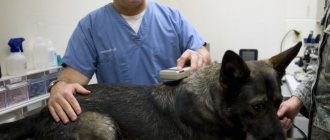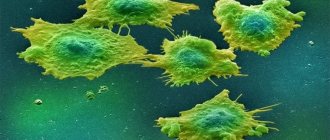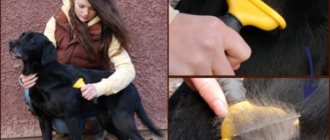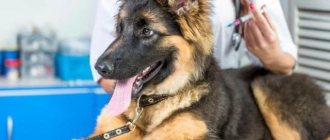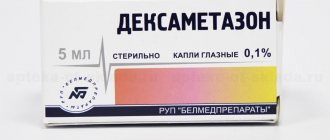Leptospirosis is an extremely dangerous infectious disease caused by bacteria from the genus Leptospira. Domestic and wild animals (including birds) are susceptible to the disease. Humans also suffer from leptospirosis.
There are many types of pathogenic Leptospira known, but leptospirosis in dogs is mainly caused by Leptospira canicola and Leptospira icterohaemorrhagiae, and slightly less frequently by Leptospira grippotyphosa and Leptospira pomona. These serotypes of bacteria often cause leptospirosis in humans, so untimely diagnosis and treatment of the animal can lead to serious consequences not only for the pet itself, but also for its owner. The bacterium primarily affects the liver, kidneys, lungs, and then harms the entire body with toxins.
Leptospirosis in dogs is registered in all countries of the world and is a fairly common disease, since canines are most susceptible to this disease and have a hard time suffering from it.
Photo: Ryan Register
It is extremely important to remember that treatment of leptospirosis in dogs should be carried out exclusively under the supervision of a veterinarian in order to avoid serious complications (including death) and the spread of the disease.
General description of the disease
Leptospirosis is a dangerous disease that affects blood vessels, kidneys, liver and other body systems.
The causative agents of the disease are Leptospira bacteria, characterized by:
- spiral shape, allowing it to spread freely and quickly within the body after penetration;
- resistance to adverse factors.
Treatment of leptospirosis depends on the symptoms shown in the dog, so cases where the symptoms are mild and go unnoticed for a long time are especially dangerous.
Causes of the disease
The occurrence of the disease is caused by poor health, unable to resist bacteria. In this regard, the risk group includes:
- older dogs;
- puppies up to six months;
- animals with chronic diseases.
You can become infected with Leptospira through:
- Consuming contaminated food or water. Raw meat is especially dangerous.
- Swimming in ponds with standing water. In puddles and creeks, bacteria live for about 200 days without a host. Their reproduction decreases only at low temperatures.
- Contact with infected animals. The danger is posed not only by sick dogs, but also by small rodents that spread the infection.
- Crowded conditions. If one of the dogs kept in the kennel is sick with leptospirosis, then all the animals will be at risk.
- The bite of an insect that is a carrier.
- Birth or feeding. Leptospirosis during pregnancy or lactation is equally dangerous for mother and puppy.
Main symptoms
The development of leptospirosis can be suspected already from the first symptoms, which affect a sharp decrease in activity and a gradual deterioration in well-being. A sick dog has:
- A jump in temperature to 42°, accelerated heart rate and increased breathing.
- Vomiting and diarrhea. There is blood in vomit and feces. Due to dehydration, diarrhea gives way to constipation.
- Fetid ammonia odor from the mouth, which appears when the mucous membranes turn yellow. In addition to the mucous membranes, the whites and conjunctiva of the dog’s eyes turn yellow.
- Formation of plaque with an unpleasant odor on the fur and skin.
- Change in urine color to brown, stained with traces of blood. The pet refuses water, which leads to a gradual reduction in urination and the development of kidney failure.
- Severe pain when palpating the abdomen.
- The appearance of purulent ulcers in the mouth, resembling small scratches.
- "Crumbling" of the nose. The formation of weeping spots on the lobe leads to the death of the tissue after it dries.
- Heaviness of breathing, accompanied by wheezing and gurgling. In some cases of leptospirosis, convulsive seizures are recorded in dogs.
On days 7-10, as the body gradually depletes, the body temperature drops below normal (37.5°). It is almost impossible to save an animal in this condition.
In some dogs, the disease may be asymptomatic, but the symptoms are especially pronounced in breeds with folded skin:
- bulldogs;
- basset hounds;
- pugs;
- Shar Pei;
- mastiffs;
- bloodhounds.
Description and features of the disease.
Leptospirosis, also called Weill's disease or infectious jaundice, was registered in 1850 in Germany. The disease was then called canine typhus.
The main signs of the disease: fever, weakness, loss of appetite, diarrhea, kidney and liver failure. Diarrhea is often replaced by constipation with a specific odor. Characteristic symptoms for leptospirosis are yellow mucous membranes and paralysis of the hind limbs.
The danger of the disease is its asymptomatic course. The pathogen can live in the animal’s body for years, accumulating in the kidney tubules. At the same time, the carrier remains a source of infection for humans and other animals. Once released into the environment through the excretions of an infected dog, the bacterium remains viable and infectious.
How does infection occur?
Leptospira infection occurs through damaged skin or mucous membranes, as well as through the respiratory or sexual route. The process includes 2 main stages:
- Bacteremic. After entering the body, bacteria move through the lymphatic system to the bloodstream. Having reached the main systems (gastrointestinal tract, central nervous system, respiratory) and organs (kidneys, lungs, liver) of the body, leptospira begins to actively reproduce, eliminating inflammatory processes. Incubation lasts from 2 days to 1 month.
- Toxic. Having gone through incubation, the bacteria again rush into the bloodstream, releasing toxic products of their vital activity. Due to severe intoxication, the main symptoms begin to appear. The released substances thicken the blood, leading to thrombosis and pathologies of the affected organs.
5-7 days after infection, the animal becomes a carrier of pathogenic bacteria contained in saliva, urine and other biological fluids. The virulence of Leptospira can persist for several years (4 years) after recovery, but the recovered dog will have immunity to them.
Personal preventive measures
When working with vaccine products, you should strictly follow all recommendations and instructions, observing all personal safety rules provided for personnel who deal with vaccination materials and medicines. Despite the fact that during the application of the vaccine, the specialist does not need additional protective equipment, he needs to behave competently, eliminating the risk of biological material getting on the skin and mucous membranes.
If droplets of the vaccine get on the epidermis or membranes of the eyes, then these areas should be immediately washed with a sufficient amount of running water. In case of careless behavior with the drug, which led to its administration to a person, the injection site must be treated with iodine solution or alcohol. When providing first aid to an injured person, you should definitely contact a doctor for further examination.
Forms of leptospirosis
Substances secreted by leptospira damage the walls of blood vessels, causing extensive bleeding. Based on the severity of hemorrhagic syndrome and the degree of liver damage, 2 forms of the disease are distinguished:
- hemorrhagic;
- icteric.
According to the degree of manifestation of symptoms, the following forms are distinguished:
- Latent. The animal does not show signs of leptospirosis, but is a carrier, infecting other dogs.
- Spicy. Rapid development of the disease (2 days), leading to rapid failure of internal organs. If an animal suffers from acute leptospirosis, the chance of recovery is 15% out of 100.
- I'll sharpen it up. Unlike the acute form, it has less pronounced symptoms and lasts 10-20 days, reducing the risk of death.
- Chronic. Acute and subacute forms can develop into a chronic disease, characterized by periodic remissions and exacerbations against the background of weakening immune defense. A minimal percentage of dogs can be completely cured.
Hemorrhagic
According to the nature of the course, the hemorrhagic form, characterized by severe liver damage, can be acute or subacute. The risk group includes adult dogs over 5 years of age.
A sick animal will experience:
- pinpoint hemorrhages and ulcers on reddened mucous membranes;
- scarlet uncoagulated blood in feces;
- reduction of urination to complete absence (gradual failure of the kidneys and liver);
- cramps and severe pain in the abdominal area.
Due to the rapid rate of development of leptospirosis, the risk of death is high.
Jaundice
With this form, severe yellowness of the skin and mucous membranes is observed. Skin color changes not only in hairless areas, but also under the fur.
The likelihood of death is lower compared to the hemorrhagic form (55%), but the general signs of leptospirosis are more pronounced, leading to severe suffering for the sick dog.
Main symptoms
Signs of leptospirosis will vary depending on the form of the disease, of which there are four.
The apathetic (latent) variety is considered the most harmless. Characteristic signs include a slight increase in body temperature (maximum 1 degree), a depressed state of the animal, pallor or yellowness of the mucous membranes. Symptoms disappear on the second day after infection, and the dog recovers.
The chronic form is the rarest. The animal is losing a lot of weight, and the lymph nodes in the groin and under the jaw are enlarged. The temperature rises from time to time, the urine becomes brown or dark yellow, and the fur on the sacrum and other areas thins out. The dog hides from people, looking for the darkest places. Pregnant bitches give birth to dead offspring.
The fulminant (superacute) form lasts up to two days and has a pronounced clinical picture. Body temperature rises sharply (up to 41.5 degrees) and persists for several hours, then drops (up to 38 degrees). The dog's behavior changes, as a rule, it becomes violent and aggressive.
Yellowing of the mucous membranes and rapid breathing are observed. This is the most dangerous form, since if the animal does not receive medical attention, it will die.
The acute form is observed in young dogs. The temperature rises (up to 41.5 degrees), the mucous membranes and sclera become yellow. Urine is released in small portions and has a brown tint. Sometimes there is diarrhea, and blood can be seen in the stool. The dog, suffering from severe pain in the lower back, rushes about, whines, and worries.
Necrosis of the epidermis develops, ulcers, erosions, and bruises form on the skin. The fur becomes dull and dandruff appears.
The subacute form lasts 2-3 weeks and is characterized by the following symptoms: general exhaustion, weakness, trembling of the limbs, purulent discharge in the corners of the eyes, fever up to 39.5 degrees. Signs inherent in the acute form are also observed, but they are not so pronounced. This variety is also dangerous and leads to the death of the dog in half of the cases.
Diagnostics in a veterinary clinic
For successful treatment, it is important to carry out timely diagnosis to avoid transition to the toxic stage.
To determine leptospirosis, the following is examined:
- urine showing the presence of bacteria;
- blood showing the presence of antibodies to Leptospira.
Damaged organs are examined only if the animal dies.
What is done for diagnostic purposes
The RosVet VC has its own laboratory, so all the tests needed to make a diagnosis are taken within the clinic’s walls and immediately sent for testing.
The analysis requires the blood and urine of a sick dog, and less often, discharge from the genitals. If the dog has died, then the internal organs are examined for characteristic damage by leptospira.
A drop of urine is examined under a microscope, “planted” on a nutrient medium, in short, everything that is needed is done to isolate living Leptospira and confirm the diagnosis. They do not look for a living spirochete in the blood; they detect antibodies to the bacterium.
Treatment of leptospirosis in dogs
Diagnostics that determine the stage and form of leptospirosis allows you to select individual treatment. The objectives of further therapy are:
- Destruction of Leptospira. During the first 6 days after infection, a hyperimmune serum containing protective antibodies is injected under the shoulder blade. Immunity to the pathogen develops within 3 hours after administration and lasts 14 days. In advanced cases, additional injection of serum with a 2-fold reduction in dose is acceptable.
- Elimination of intoxication and inflammatory processes with the help of antibiotics (Levomecitin, Kefzol, Bicillin, Tetracycline, Streptomycin) and rehydration.
- Restoring the functionality of damaged organs. In addition to a special diet that eases the load on the gastrointestinal tract, the following drugs are used: hepatoprotectors (liver); riboxin (heart); ascorutin (vessels); lespephlan (buds).
- Increasing immune defense with immunomodulators (Hemobalance, Lykopid), vitamins and minerals.
How and with what to treat
Leptospirosis is a life-threatening disease, so entrust treatment to specialists in a hospital setting. If you live in an area unfavorable for the disease, are fond of hunting, or travel with a pet, take care of yourself and get vaccinated.
In the first days of the disease, the dog can be given medications intramuscularly or subcutaneously. In the future, local blood circulation is impaired and medications from the injection sites will be poorly absorbed into the blood. Therefore, intravenous drip administration of drugs is preferred. Leptospira live in the renal tubules, which are poorly supplied with blood. Therefore, antibiotic therapy does not always lead to the expected result.
The therapeutic strategy for the treatment of leptospirosis in dogs is developing in the following areas:
- Destruction of the pathogen. In the first days of the disease, hyperimmune serum is administered for 3 days in a row. At the first stage, long-acting antibiotics of the cephalosporin or penicillin series are effective. If the disease has transformed into a chronic form, treatment is continued with other antiseptics. Tetracyclines destroy Leptospira, however, they are characterized by side effects - they interfere with the restoration of local blood flow. Bicillin 3 or 5 injections, practiced in previous years, are ineffective due to impaired local circulation. At the same time, immunocorrectors are administered - Polyoxidonium, Lykopid, Ribotan, Gamavit.
For leptospirosis, intravenous administration of medications is indicated. - Fight dehydration. The onset of the disease is characterized by thirst. Subsequently, debilitating vomiting develops. The dog swallows the water and immediately vomits it. In order for the animal to drink, regurgitation is stopped by parenteral administration of Metoclopomide (Cerucal). Osmoprotective salts are administered dropwise:
- Ringer-Locke solution with glucose;
- Reopoliglyukin;
- Lactosol.
Hemodez;
When the dog is able to drink, diarrhea is stopped by oral administration of sorbents - Enterosgel, Smecta, Polyphepam.
Hill's k/d veterinary food is prescribed to animals with kidney and heart disease.
They contain protein hydrolysates and dried chicken eggs. They are distinguished by a low concentration of complete, easily digestible proteins and high calorie content. One jar contains a daily portion for a pet weighing 30 kg. Please note that once opened, canned food must be fed within 36 hours or less. If you have a small dog, buy Hills k/d granules and soak them for the first time. The duration of diet therapy is determined by the doctor. A 370 g can of canned food costs 261 rubles, a 2 kg package of dry granules costs 1517 rubles.
Caring for a sick pet
One of the important points when caring for a sick animal is following a diet:
- During the rehabilitation period, it is important to reduce the usual portion sizes and increase the number of meals.
- To reduce the load on the organs, low-protein and low-fat foods, served boiled, are encouraged.
- In the case of dry feeding, the doctor must select a line of special veterinary feeds.
Home care for a sick pet is permissible with the permission of a veterinarian when the body temperature returns to normal, eliminating the possibility of death.
To minimize the risk of the spread of Leptospira, the following manipulations must be carried out:
- Disinfect the apartment using a 3% solution of chloramine-B. Use an ultraviolet lamp for half an hour every day.
- Use protective gloves when handling a sick animal.
- Avoid urinating in inappropriate places. In case of force majeure, resort to chloramine solution.
- Remember to wash your hands thoroughly after every contact with your dog.
Consequences of the disease
A strong blow to the body’s protective functions weakens the immune system and disrupts the functioning of internal organs. Even a cured animal may experience consequences such as:
- cirrhosis;
- pneumonia;
- paresis;
- meningoencephalitis;
- complete paralysis.
Due to the high risk of complications, not all veterinarians undertake treatment for dogs. This is especially true for cases with advanced forms of leptospirosis. Only a small percentage of animals not included in risk groups manage to avoid unpleasant complications.
Disease prevention
You can save your pet from infection using preventive measures, including:
- Prohibition on swimming in puddles and other bodies of water with standing water. While walking, do not allow your animal to drink water in such places.
- Timely treatment against parasites. Be sure to check your dog after walks.
- Cleanliness of personal belongings. Feeders, bedding and other personal items should be disinfected regularly.
- Annual vaccination. Preventive vaccination is carried out 2 times a year upon reaching 2 months. Even a vaccinated dog can get sick, but acquired immunity will ease the overall course of leptospirosis, smoothing out the manifestation of symptoms.
- Limiting communication between domestic dogs and street dogs.
- Using high-quality feed or natural food that has undergone heat treatment.
Vaccination
As a rule, persistent immunity after vaccination is observed for up to half a year. Therefore, the canine leptospirosis vaccine should ideally be given twice a year, every 6 months at the same time and twice with an interval of 14 days.
However, more often dogs are vaccinated annually, at regular intervals. For the first time, such a vaccination is given to a puppy at the age of 3 months, but not during teeth growth. At the same time, the vaccine will not provide a 100% guarantee of protection against leptospirosis, but it will significantly soften the clinical picture if the pet does get sick.
A week before vaccination, it is necessary to carry out deworming. After vaccination, you must quarantine for 2-3 weeks, depending on the vaccination. The vaccination schedule is drawn up by a veterinarian, and not independently. It is necessary to monitor the expiration date of the vaccine and avoid using an expired drug.
List of vaccines successfully used in Russia:
- Nobivac L - against leptospirosis. Country of origin: Holland.
- Nobivac LR - against leptospirosis and rabies - manufacturer - Holland.
- Leptodog L (France).
- "Multikan-6" from Russia.
- "Vangard 5/L", "Vangard 7" from the USA.
- "Biovac L" from Russia.
Nobivak and Multikan-6 have the largest number of positive reviews and the fewest side effects. But you should definitely consult an experienced veterinarian before using the vaccine. It would be a good idea to read reviews on the Internet yourself. Well, and, of course, read the instructions for the drug.
Is leptospirosis dangerous for humans?
Leptospira is dangerous for all animals and for people too. The only difference is that a person is not able to secrete virulent bacteria. You can become infected from a pet through contact with its fluids through microcracks and wounds, so all manipulations with a sick animal are carried out only in special clothing and protective gloves.
If a pet is sick, then not only the four-legged family members, but also the owners are tested. In case of timely diagnosis, treatment proceeds without consequences.
Due to the fact that Leptospires pose a danger not only to four-legged friends, but also to people, it is important to understand the main symptoms and respond in a timely manner even at the slightest suspicion.


